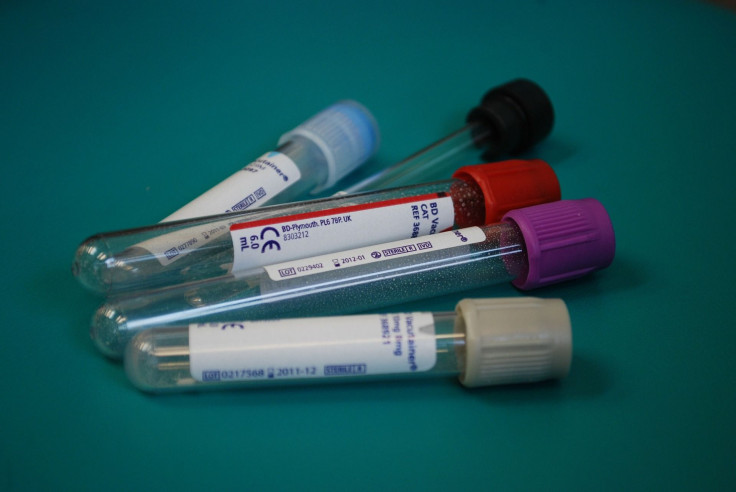Flatline: Creutzfeldt-Jakob Is One Of The World's Most Deadly Diseases, And There's No Way To Treat It

After dozens of tests and scans, you’re sitting across from your doctor, and he sighs. Brain cancer, he tells you, and your heart drops. Depending on the type of tumor, your chances of survival could be quite reasonable or nearly hopeless. But the percentage he gives you — even if it’s as depressing as 20, 15, or 10 percent — represents a fighting chance. There are surgeries to remove tumors, and if yours is inoperable, there’s still chemotherapy. You could take corticosteroids. Unless a cancer is in its final stages, doctors have multiple strategies they may employ, and that means there’s hope.
This is more than can be said for some other diagnoses.
Some diseases, whether they occur spontaneously, are transmitted through the blood or fecal matter, or come encoded in our genes, have baffled scientists for centuries. And not in the way that we’ve been unable to cure cancer — these illnesses have thwarted us in such a profound manner that we have yet to come up with a single treatment that even slows them down. Here is a look at once such sickness, sometimes called the human variant of mad cow: Creutzfeldt-Jakob disease.

Poisonous Proteins
Creutzfeldt-Jakob disease (CJD) is one class of conditions that spreads through prions, refolding proteins that disrupt signaling processes and cause progressive neurodegeneration. Researchers don’t totally understand them yet, which is a large reason they’re impossible to treat. Though it’s the most common kind of prion disease in humans, CJD is still quite rare: It shows up in about one out of every million people.
People acquire CJD in a few different ways, but most often it appears randomly. Sporadic CJD accounts for around 85 percent of cases, and researchers have hypothesized the disease begins when normal prions mutate into the infectious, specially folded prions. This can also happen because of hereditary factors, such as a tendency toward changes in the gene that controls normal prion formation. CJD can also come from outside sources, usually exposure to infected brain tissue or spinal cord fluid or to contaminated surgical equipment. The disease cannot spread through the air or any other casual contact.
Since the vast majority of CJD cases occur with no warning and without any contamination, there isn’t much anyone can do to avoid it. The disease usually develops later in life, around age 60, but some variations can crop up as early as a person’s 20s.
“Rapidly Progressive”
In a sick person, CJD looks a lot like other neurodegenerative disorders like Huntington’s disease and Alzheimer’s. The condition consists of exclusively brain-related symptoms: hallucinations, personality changes, impaired thinking, and difficulty speaking or moving. As things progress, the mental impairment becomes severe dementia, and patients experience muscle jerks and even blindness. Unfortunately, there is no single test that can tell CJD from other neurodegenerative diseases, so doctors have to resort to more Dr. House-like diagnostic measures.
Tests including electroencephalogram and MRI can give doctors a better idea what’s going on in the brain, and a spinal tap can help rule out other forms of dementia. While there are some specific electrical patterns in the brain that can indicate CJD, the only way to confirm a diagnosis is to actually perform a biopsy. Of course, autopsies work too — and since CJD can kill in months or even weeks, sometimes it’s the only way clinicians know what went wrong. Most people die within six months of the appearance of initial symptoms, and only around 15 percent live to see two years.

No Cure
During this time, the best doctors can do is try to alleviate any pain or suffering the patient feels. There is no way to cure or even slow the disease. This isn’t for lack of trying. Researchers have tested antibiotics, steroids, and antiviral agents. A team from the University of California, San Francisco gave an antimalarial drug called quinacrine a shot, only to find no real difference in mortality between test and control groups. Another group of researchers screened certain drugs and identified characteristics in astemizole favorable for a possible treatment.
“The future of therapeutic intervention in CJD should begin with the identification of novel compounds with strong antiprion effects,” wrote the authors of one 2014 study. “These need validating in animal models of disease before their use in humans. … The use of more than one model of prion infection should also be encouraged.”
It’s a daunting task, but researchers aren’t giving up the fight to cure Creutzfeldt-Jakob disease and other, equally scary prion conditions. There are studies and trials underway, and any one of them could provide a clue as to how we take the disease down for good.



























